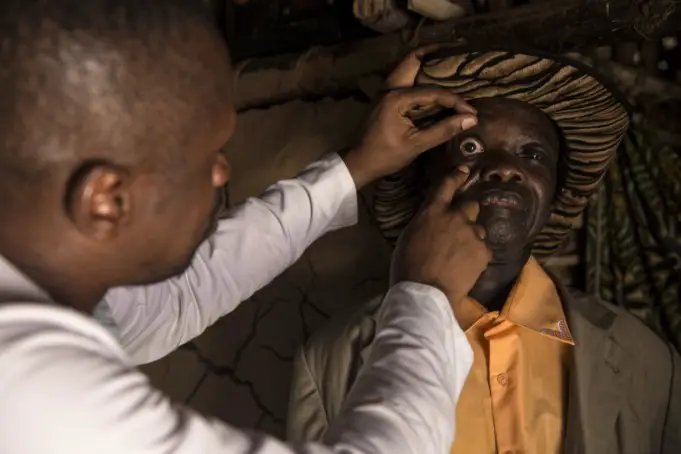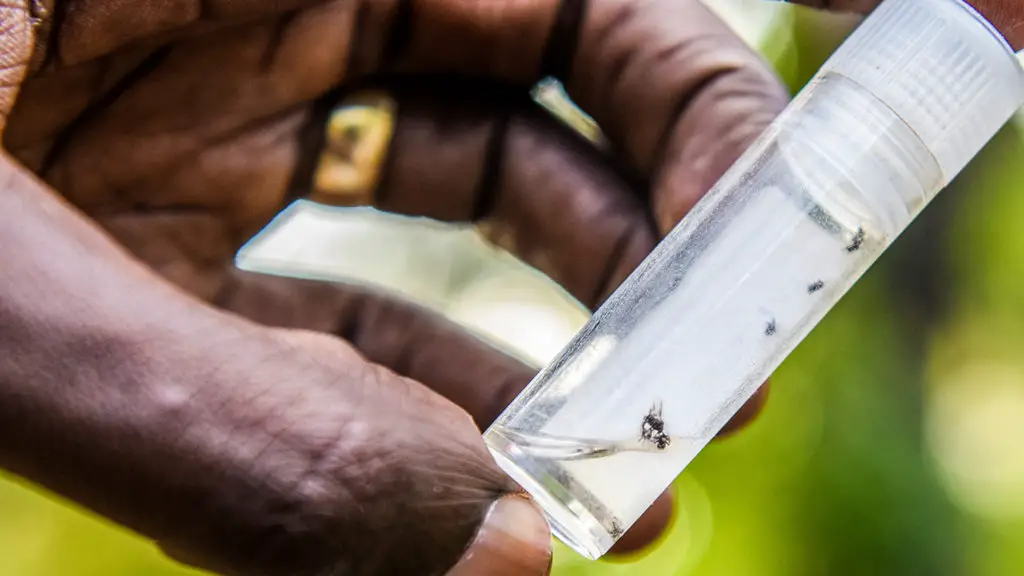River blindness, also known as Onchocerciasis, is a disease caused by the worm Onchocerca volvulus, which affects the skin and eyes. The parasitic worm is spread to humans and livestock from the bite of a blackfly belonging to the genus Simulium.
These flies are commonly found near rivers, hence the given name. Symptoms of the disease include bumps under the skin, severe itching, and blindness.
River Blindness is a tropical disease and is prevalent in Sub-Saharan Africa. According to the Center for Disease Control (CDC), it is a neglected tropical disease. The CDC defines neglected tropical diseases as “a group of parasitic and bacterial diseases that cause substantial illness for more than one billion people globally.”
Neglected tropical diseases affect the world’s poorest people, compromise human health and mental development, and contribute to maternal mortality rate.
Also, the World Health Organization (WHO) estimated in 2017 that there are about 20.9 million cases of Onchocerciasis worldwide, with more than 91% of infected people living in Sub-Saharan African countries like Nigeria, Angola, Benin, Burkina Faso Gabon, Niger, Senegal, and Malawi.
The cases of the disease have also been discovered in Yemen, Venezuela, and Brazil.
Causes of River Blindness
It takes repeated bites from a blackfly for the infection to occur. Once inside a host, the worm creates larvae and matures into adults, then it moves to the nodules under the skin where they infect another back fly that bites the host.
They spend close to a decade reproducing microfilariae and live out their entire life cycle in the bloodstream. The physical discomfort caused by the disease happens when the worms die, and this takes up to 10 to 15 years after the host becomes infected.
When the larvae infect the blackflies, it grows and morphs over two weeks before they reach the infectious stage and finally makes its way to the proboscis of the insect. On getting bitten by the blackfly, the infectious larvae enter the host’s body. The process is started all over again.
Inside the flies, the larvae grow and transform several times over two weeks, before they become contagious and finally make their way into the insect’s proboscis—that is, the long tube they use to eat. When the fly bites someone, the now infectious larvae enter the host’s body starting the whole cycle over again.
The people at the most risk of getting river blindness are those that live rivers where Simulium blackflies are present. These are commonly found in rural agricultural areas in sub-Saharan Africa.
Since the disease requires many bites for it to take effect, people who travel for a short time to riverine areas with blackflies are less likely to get infected with the parasite.
Signs and Symptoms of River Blindness
Onchocerciasis occurs in different stages. At first, there are no visible symptoms; it can take up to a year for the symptoms to show.
When the infection becomes apparent, symptoms may include:
- Extreme itching
- Loss skin elasticity which makes the skin look brittle
- Skin rashes
- Cataracts
- Change in skin coloration
- Altered vision
- Light sensitivity
- Swollen lymph glands
- Blindness
Diagnosis
There are several ways by which medical professionals and health care providers diagnose river blindness. One method of diagnosis is by skin snip biopsy, where small shavings of skin are taken from different parts of the body and placed in a saline solution to draw out the larvae, making it easier to spot the larvae under a microscope.
This method does not always catch the disease in people who have a light infection like those visiting risk areas for a short period.
Another test is called the Mazzotti test. This involves testing a patch of skin with diethylcarbamazine (DEC). The microfilariae die quickly upon contact with DEC, and this can lead to severe symptoms, which include fever, swollen and tender lymph nodes, edema, and hypotension.
The ways by which clinicians administer the drug is by oral doses which causes severe itching within two hours, or by putting the drug on a patch of skin. This localizes the itching and rashes on people infected with O. volvulus.
It may sometimes be necessary to surgically remove the nodules from under the skin to check if adult worms are inside. Also, the disease can be diagnosed using a slit-lamp examination, which involves the utilization of a specialized microscope to see the back of the eyes where the larvae might be present.
Because the disease is prevalent in remote villages, health care workers might not be on site to diagnose infections, and even if they are, they might not have access to the necessary tools needed for diagnosis.
It is for this reason that people are often treated for the parasite without first receiving an official diagnosis by a medical professional.
Treatment
There is no vaccine available for river blindness. However, certain medications are capable of eliminating the larvae and the worms inside the body. This can limit the symptoms and prevent further damage.
Treatment options include;
Ivermectin
This is the most common way to treat river blindness. Ivermectin is a drug used to treat other parasitic infections like elephantiasis and scabies.
Dosage is by weight and is administered by oral doses every three to six months until there are no longer signs of an infection.
The advantage of this treatment is that it kills the larvae and sterilizes the adult females inside the body, stalling the life cycle of the parasite. The drug, however, does not kill the adult worms.
Doxycycline
This drug is a treatment method for river blindness. Although doxycycline is an antibiotic and not an anti-parasitic medication, it has been shown to kill the bacteria that the adult worms need to survive.
However, it is not yet a standard treatment for the disease.
Prevention
Necessary steps need to be taken to ensure the prevention of future infections of river blindness. One of the best ways of doing this is to avoid getting bitten by blackflies.
This would involve the use of insecticides like DEET as well as wearing long sleeves and pants in areas where black flies are most likely to bite. This method of protection is not only against blackflies but all other disease-carrying insects.
Another means of preventing the disease is by controlling and eliminating the vector responsible for the condition. The parasite cannot be spread if there are no black flies in the area. Spraying breeding sites of the insects would disrupt the life cycle of O. volvulus and prohibit new cases of infections in the area.
Finally, preventing the disease from infecting the community would involve treating all members of that community with ivermectin, whether or not they have been diagnosed with the parasite.
This not only helps treat infections but disrupts the life cycle of the insect.













